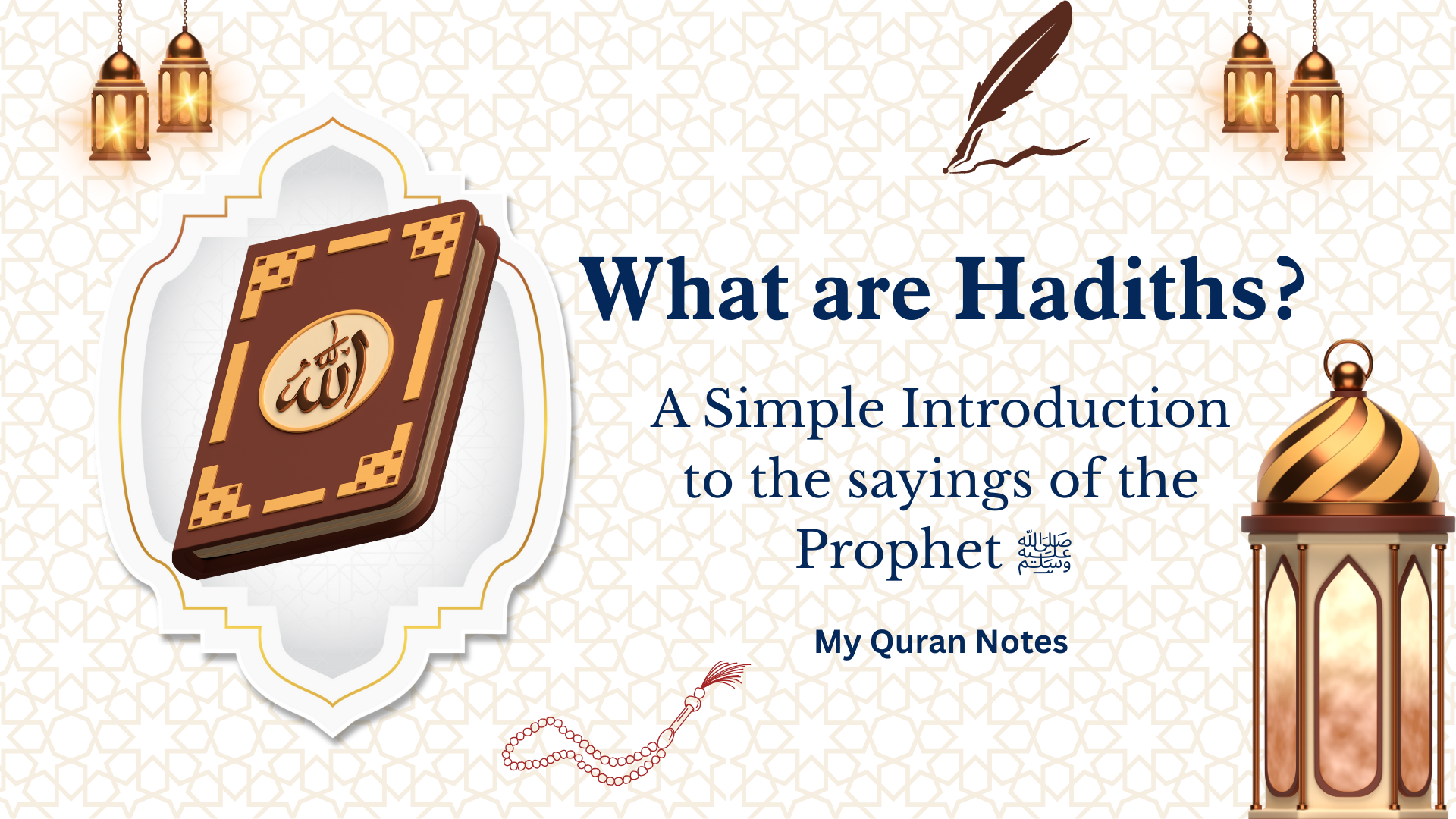Hadiths are the preserved words, actions, and approvals of the Prophet Muhammad ﷺ. They serve as a foundational source of guidance for Muslims. Hadiths help explain Islamic teachings, clarify Quranic verses, and provide practical examples of how prophet ﷺ lived his life.
Meaning of Hadith:
In Islam, the word Hadith refers to “saying, action or narration” of the Prophet Muhammad ﷺ. It means a report, narration and statement.
Importance of Hadiths:
Hadiths play a vital role in Islamic teachings, serving as the second primary source of guidance after the Quran.
- Explanation of the Quran
(For Example: The Quran commands “Establish Prayer”, but Hadiths detail the number of rak'ahs, timings and action).
- Practical Implementation of Sunnah
- Preservation of Islamic law
(Marriage, Business, Punishments)
- Moral and Ethical Guidance
(Honesty, Kindness, Patience, and Justice)
- Protection Against Misinterpretation
- Strengthening Faith
Structure of Hadiths:
Hadiths is made up of two key parts, both serving a critical role in preserving and verifying the authenticity of the Prophet Muhammad ﷺ teachings.
1. Chain of Narrators (Sanad or Isnad)
The Sanad is the sequence of narrators who transmitted the Hadith from the Prophet to the Scholars who recorded it.
Key Aspects of the Sanad
- Lists each narrator from the latest scholar back to the Prophet- Example, A heard from B, who heard from C, who heard from the Prophet…
- A continuous chain without missing links strengthens authenticity.
2. Text of the Hadith (Matn)
The Matn is the actual content - the Prophet's words, actions, and Approvals.
Characteristics of a Valid Matn
- Must not deny the Quran or established the Sunnah.
- Should be logically and verbally sound.
- Example of Matn - " The Prophet said: ‘Actions are judged by intentions’.
Types of Hadiths based on Structure:
1. Mutawatir
Narrated by so many people at each stage that falsification is impossible.
Example - Hadiths about the Five Daily Prayers.
2. Ahad (Single - Chain Narrator)
Reported by fewer narrators; further classified as:
Sahih (Authentic) - Flawless chain and content.
Hasan (Good) - Minor weaknesses but acceptable.
Da'if (Weak) - Unreliable due to broken chain and untrustworthy narrators.
3. Mawdu (Fabricated)
Falsely attributed to the Prophet; rejected by scholars.
Authentic Books of Hadiths
- Sahih al-Bukhari (considered most authentic)
- Sahih Muslim (considered most authentic)
- Sunan Abu Dawud
- Jami' al-Tirmidhi
- Sunan al-Nasai
- Sunan Ibn Majah
I try my best to share authentic and beneficial information. I pray you found this post helpful. Do share it with your Friends and Family so other may benefit too. Follow me on TikTok, Instagram and WhatsApp for more reminders. Feel free to leave a comment below, I would love to read it.
Leave a comment
Your email address will not be published. Required fields are marked *


